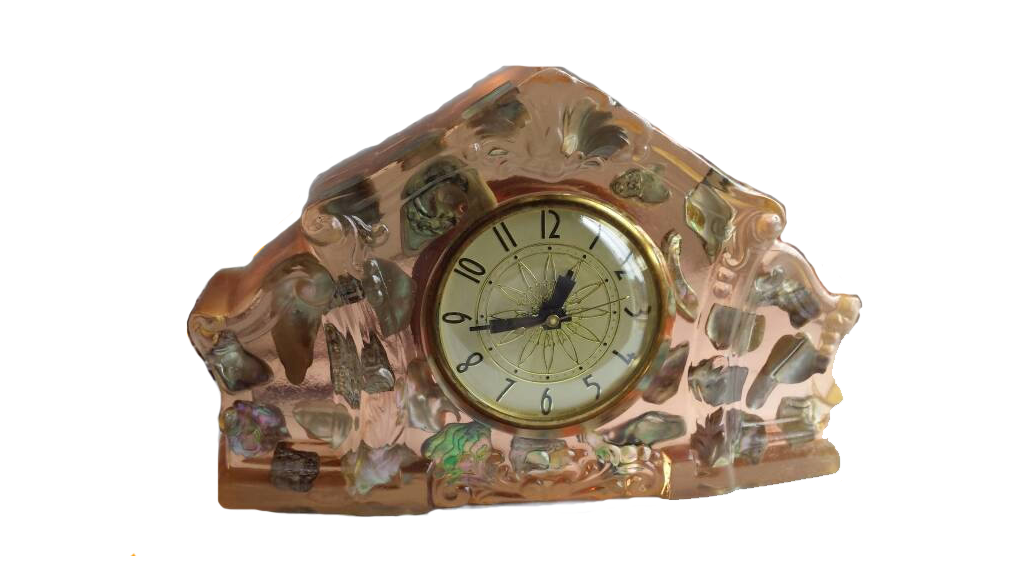Though we might scour second places like thrift stores and online vintage shops to buy ourselves the most striking and unique vomit clock, the difficult part about acquiring a vomit clock isn’t just simply whether one finds a clock that they like or admire, but how one actually takes care of the vomit clock. Just like many other things we adore in our homes – hyperactive puppies, fragrant flowers, and calming plants – vomit clocks require care, time, and attention.
Preventing UV Degradation, Cracking & Yellowing of Your Vomit Clock
One of the biggest worries about objects made out of resin, the viscous plastic-like substance vomit clocks are made out of, is resin’s unfortunate tendency to turn yellow over time. Resin is made out of a type of polymer called epoxy, which is particularly sensitive and reactive to the sun.
Over time, UV sunlight degrades epoxies and the polymers which make up resin through oxidation, a reaction of the sunlight with the polymers and oxygen in the air. This degradation results most often in yellowing, but can also unfortunately result in other side effects of chalking and cracking. Luckily, this can be avoided with the use of a UV Light Stabilizer, a chemical mixture to finish objects which protects epoxy resins (and vomit clocks) from turning yellow rapidly.

A yellowed resin clock. From an eBay listing.

A crack on a vomit clock; Source: Vomit Clock Personal Collection.
Cleaning Your Vomit Clock Regularly
The other concern in taking good care of one’s vomit clock is a concern that plagues humans, houses, and all objects alike: simply staying clean. Knowing how to clean a vomit clock may be tricky, as one wants to carefully select the right cleaners that won’t harm or decrease the notable beauty of a vomit clock. This Facebook post is packed with helpful advice about all sorts of different cleaners typically found in households acceptable to use, and here’s an example of just a few to try:
- Coconut oil
- Vaseline
- Nail polish remover (non-Acetone)
- White vinegar
- Insect repellant (DEET)
The post specifically warns against using Acetone, the chemical commonly used in many nail polish removers, as it has the unfortunate side effect of making resin cloudy.
Just as we would take care of our most prized possessions, vomit clocks too require a little love and maintenance to appear their best. The two main tips to remember when taking care of a vomit clock is to prevent decay through protecting from UV degradation and maintain aesthetic perfection by regular cleanings with everyday household products.

